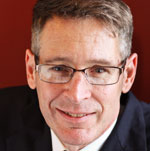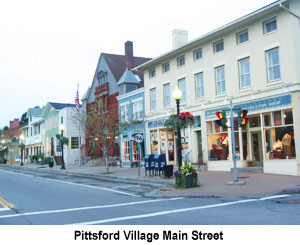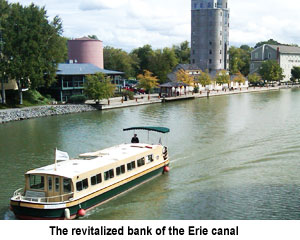
Robert Corby, Mayor of Pittsford Village, NY, USA

FRONT PAGE
About us
 

MAYORS OF THE MONTH
In 2015
Mayor of Seoul, South Korea (04/2015)
Mayor of Rotterdam, Netherlands (03/2015)
Mayor of Houston, USA, (02/2015)
Mayor of Pristina, Kosovo (01/2015)
In 2014
Mayor of Warsaw, Poland, (12/2014)
Governor of Tokyo, Japan, (11/2014)
Mayor of Wellington, New Zealand (10/2014)
Mayor of Sucre, Miranda, Venezuela (09/2014)
Mayor of Vienna, Austria (08/2014)
Mayor of Lampedusa, Italy (07/2014)
Mayor of Ghent, Belgium (06/2014)
Mayor of Montería, Colombia (05/2014)
Mayor of Liverpool, UK (04/2014)
Mayor of Pittsford Village, NY, USA (03/2014)
Mayor of Surabaya, Indonesia (02/2014)
Mayor of Santiago, Chile (01/2014)
In 2013
Mayor of Soda, India (12/2013)
Mayor of Zaragoza, Spain (11/2013)
Mayor of Marseille, France (10/2013)
Mayor of Schwäbisch Gmünd, Germany (09/2013)
Mayor of Detroit, USA (08/2013)
Mayor of Moore, USA (07/2013)
Mayor of Mexico City, Mexico (06/2013)
Mayor of Cape Town, South Africa (05/2013)
Mayor of Lima, Peru (04/2013)
Mayor of Salerno, Italy (03/2013)
Governor of Jakarta, Inbdonesia (02/2013)
Mayor of Rio de Janeiro, Brazil (01/2013)
In 2012
Mayor of Izmir, Turkey (12/2012)
Mayor of San Antonio, USA (11/2012)
Mayor of Thessaloniki, Greece (10/2012)
Mayor of London, UK (09/2012)
Mayor of New York, USA (08/2012)
Mayor of Bilbao, Spain (07/2012)
Mayor of Bogotá, Columbia (06/2012)
Mayor of Perth, Australia (05/2012)
Mayor of Mazatlán, Mexico (04/2012)
Mayor of Tel Aviv, Israel (03/2012)
Mayor of Surrey, Canada (02/2012)
Mayor of Osaka, Japan (01/2012)
In 2011
Mayor of Ljubljana, Slovenia (12/2011)
COUNTRY SECTIONS
Argentine Mayors
Belgian Mayors
Brazilian Mayors
British Mayors
Canadian Mayors
Chilean Mayors
Colombian Mayors
Czech Mayors
French Mayors
German Mayors
Italian Mayors
Japanese Mayors
Mexican Mayors
Spanish Mayors
US Mayors
Local government in the US

Worldwide | Elections | North America | Latin America | Europe | Asia | Africa |


 




 













|
|
Mayor of the Month for March 2014
Robert Corby
Mayor of Pittsford Village, New York, USA
Interviewed by City Mayors’ North American team
3 March 2014: It’s not often that small communities in the United States become models of planning and design for much bigger communities, but the Village of Pittsford, New York (population 1,335) and Village Mayor Robert Corby have gained considerable attention for demonstrating how economic viability is tied to the design of the physical environment. Pittsford and Mayor Corby have earned awards for excellence in urban design, leadership in planning, historic preservation and rehabilitation, and downtown revitalization from such organizations as the National League of Cities and the American Institute of Architects. In an interview with City Mayors, Mayor Corby explains his vision of a livable community.
Pittsford was founded in the late-1700s and is located on the Erie Canal in Upstate New York, near Rochester. For most of its early history, farmers brought their grain harvests to Pittsford for milling into flour and shipment on the Erie Canal.
 Historically, villages in the United States, like Pittsford, developed as centers of agricultural areas. They were typically small settlements surrounded by farmland. Most often, they were incorporated municipal governments and offered residents full municipal services. Practically and legally, villages functioned as very small, self-contained cities and served rural populations. Historically, villages in the United States, like Pittsford, developed as centers of agricultural areas. They were typically small settlements surrounded by farmland. Most often, they were incorporated municipal governments and offered residents full municipal services. Practically and legally, villages functioned as very small, self-contained cities and served rural populations.
As the farmland became built suburbs in the decades after World War II, many villages were damaged by highways and competition from big-box retailers. Shops on the traditional village Main Streets closed and village residences deteriorated as businesses and people moved to the sprawling new suburbs. Villages came to be seen anachronisms—relics of a quaint but bygone era of American history.
The Village of Pittsford was no exception. In the 1950s, ‘60s, and ‘70s, the farmland surrounding the Village Pittsford experienced significant population growth from suburban residential development, decreasing demand for the older homes in the village. Through the 1980s and 1990s, the development of nearby shopping malls eliminated most of the Village’s traditional service retail businesses.
But Pittsford refused to succumb to the economic trends. Largely through the efforts of its five-term elected Mayor, Robert Corby, Pittsford has become a national model of how the proper use of quality design can be an anecdote to prevailing market forces. In his 21 years in office, Mayor Corby, a licensed architect, emphasized the physical environment and made it a matter of public policy to invest in public spaces. Mayor Corby galvanized residents, business people, and other local stakeholders to work together to restore historic properties, revitalize commercial areas and the waterfront, and create an appealing and functional pedestrian realm.
Pittsford cannot rest on its accolades, however. The forces for suburban sprawl are still strong in the United States. And many policymakers have ambivalent feelings about villages. For example, New York State, with the support of Governor Andrew Cuomo, offers financial incentives for villages to dissolve and merge into surrounding suburban towns, even as the State promotes Smart Growth and the concept of “urban villages” for city neighborhoods.
 Mayor Corby talks with City Mayors about villages, design, and livability Mayor Corby talks with City Mayors about villages, design, and livability
City Mayors: What is your vision of a livable community?
Mayor Corby: I believe a community that provides peoples’ needs from cradle to grave is one that emphasizes the design of physical space. In other words, we must ensure that our buildings and public spaces not only function but that they are pleasant for us to use and spend time in. For decades, American society looked only at function and only from the perspective behind a steering wheel. It does matter how things look. When a place is beautiful and cared for, people naturally care about the place. Good design fosters pride. A livable community is one that people feel ownership for and our willing to work towards its improvement.
City Mayors: You are a practicing architect. Is sounds like architectural design, urban planning, and long-term thinking are central to your administration of Pittsford.
Mayor Corby: For upstate New York, Pittsford is an old village. The village of Pittsford retains an outstanding legacy of fine Federal and later nineteenth-century architecture. Pittsford was fortunate that citizens stopped bulk demolitions in the 1960s when suburban sprawl planning trends were reaching their peak. As a result, most of the village’s historic core and architecturally significant buildings are still standing. The village’s outstanding historic assets set a high standard for both architectural design as well as the physical qualities of public space.
When I first assumed office 21 years ago, we—residents, business persons, and myself working cooperatively—set goals to preserve the historic, dense mix of residential and retail businesses; restore the waterfront warehouse/mill district; calm traffic; and reclaim streets and public spaces for public enjoyment through the restoration of street trees, new landscaping, benches, pedestrian scaled streetlights, a refusal to let automobiles dominate the landscape, and other improvements. We codified these goals in public policies, comprehensive plans, zoning ordinances, design standards, and our capital budget.
In other words, an intentional and strategic emphasis on quality architectural design and urban planning have been critical to both preserving and enhancing the physical character, livability, and commercial viability of our community for the past two decades. The complete revitalization of the village’s historic canal side warehouse/mill district is a direct result of making architecture and urban design the driving force in Village policy. One key success in our Village is that we have preserved the modest vernacular homes as well as the larger architecturally distinguished structures. This has been possible because we have studied the details of historic regional construction and have endeavored to preserve them. Another key initiative has been to restore street tree plantings. Although these are simple steps, when many simple things are done in concert, significant results are achieved.
City Mayors: Is Pittsford unique, or can your village’s success be replicated?
Mayor Corby: I believe we are demonstrating that villages are the appropriate scale and model for the restoration of urban neighborhoods and the redesign of newer suburbs so that both offer a better quality of life.
Villages are one of the few places in America where many of the positive qualities found in traditional communities remain intact. These qualities include walkability, integration of varied socioeconomic classes and age groups, a sense of place and history, active public spaces, ready access to recreational spaces, density, mixed uses, concentration of social institutions and commercial services, and a sense of social connection and community - all characteristics that recent studies suggest are appealing to the growing empty-nester demographic. Villages are appealing because they are designed to a human scale rather than an automobile scale. Because villages generally are small in scale, they are easier to revitalize and repair than larger urban communities. It is economically practical to revitalize villages today, and this is a lesson for city neighborhoods and sprawling suburbs.
City Mayors: How close is Pittsford to achieving its vision of livability?
Mayor Corby: Our village has achieved nearly all the goals identified two decades ago. But in the process we, as a community, have learned more about the dynamics of good urban space. Part of the process of implementing good design is identifying new goals so we do not become complacent or static and that we are prepared as new issues and challenges appear. A recent example is our new Village farmers’ market that will be opening this coming spring. No one anticipated this type of use even a decade ago. Since that time, in our region, there has been tremendous growth in the appreciation of organic and locally grown food. The planning and coordination for this project was completely grassroots driven. If the vision is to engage citizens in the management and improvement of the community, we have achieved that goal. However, like all design issues, the vision of livability is a moving target, and I hope we, as a community, are never satisfied that our work is done.
City Mayors: So… a mayor can never be satisfied?
Mayor Corby: By definition, a mayor should never be satisfied. Municipal work that accurately represents the public interest is often an awkward, messy, and slow process. There is a level of care required to ensure the outcome is right for the long term health and benefit of the community. By the time one project is finished, we should already be organizing and planning the next one. Fortunately, we learn each time we do a project. This knowledge raises expectations and reveals new needs. In some ways being mayor is like having a demanding child. The commitment is long term and very personal.
|
|

|































 Historically, villages in the United States, like Pittsford, developed as centers of agricultural areas. They were typically small settlements surrounded by farmland. Most often, they were incorporated municipal governments and offered residents full municipal services. Practically and legally, villages functioned as very small, self-contained cities and served rural populations.
Historically, villages in the United States, like Pittsford, developed as centers of agricultural areas. They were typically small settlements surrounded by farmland. Most often, they were incorporated municipal governments and offered residents full municipal services. Practically and legally, villages functioned as very small, self-contained cities and served rural populations.  Mayor Corby talks with City Mayors about villages, design, and livability
Mayor Corby talks with City Mayors about villages, design, and livability